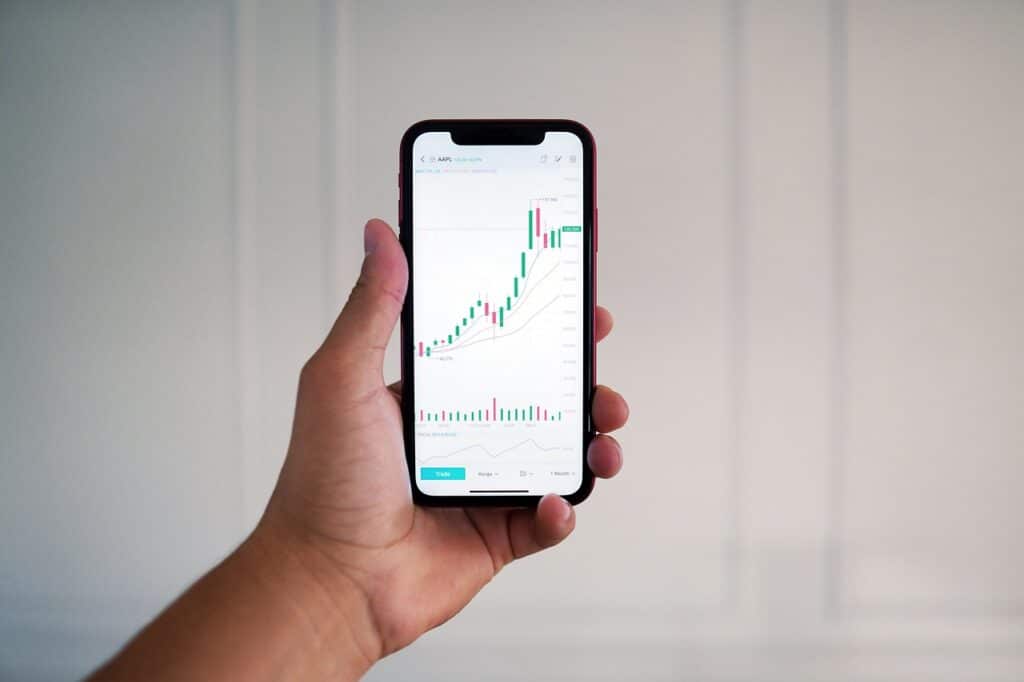In today’s global business landscape, intellectual property has become a valuable asset for many companies. Patents, in particular, are crucial for protecting innovative ideas and ensuring a competitive edge. However, the complexities surrounding patent valuation and transfer pricing have also grown significantly. This article delves into the intricate world of patent valuation and transfer pricing, offering a comprehensive and in-depth exploration of these critical aspects of modern business.
Understanding the Basics of Patent Valuation
Patents are the cornerstone of innovation, providing inventors with exclusive rights to their creations for a defined period. These legal safeguards empower inventors by granting them the authority to make, use, and sell their inventions, thus encouraging creativity and driving progress in various industries. However, determining the precise value of a patent is far from straightforward, and it is a process fraught with complexity. The significance of patent valuation is underscored by its pivotal role in numerous facets of the business world.
Accurate patent valuation is essential for transparent financial reporting, particularly for companies that need to assess the worth of their intellectual property assets. This information not only aids in asset management but also offers stakeholders, shareholders, and potential investors a clear picture of the company’s financial health. Moreover, in the realm of mergers and acquisitions, patent valuation can be the linchpin that decides the success or failure of a deal. Companies considering acquisitions must gauge the value of patents held by the target company, which may impact the acquisition price and overall feasibility. Additionally, licensing agreements, which allow third parties to use patented technology, are heavily influenced by the value attributed to these patents. A well-structured licensing agreement can be a lucrative source of revenue for patent holders, but a poor valuation may lead to missed opportunities and undervalued licensing fees.

The Importance of Patent Valuation
The importance of patent valuation in the business world cannot be overstated. It serves as the bedrock for informed decision-making, guiding businesses through critical choices that can shape their future. Companies often find themselves at a crossroads, pondering whether to sell, license, or leverage their patents for financing. In all these scenarios, understanding the value of their intellectual assets is a pivotal factor in determining the best course of action.
Consider a company that has developed a groundbreaking technology but is facing financial constraints. In such a situation, the company may contemplate selling its patents as a means of generating immediate revenue. However, without a reliable valuation, it would be challenging to set a fair selling price. A price too low could mean forfeiting potential profits, while setting it too high may deter potential buyers. Similarly, for businesses interested in licensing their patented technology, an accurate valuation helps in establishing appropriate licensing fees that are both attractive to potential licensees and reflective of the technology’s worth. Furthermore, patents can be used as collateral for securing financing, but lenders will require a precise valuation to assess the risks and potential returns. Patent valuation, therefore, stands as a compass guiding businesses toward wise, strategic decisions that can impact their profitability, sustainability, and competitiveness in a dynamic market.
Factors Affecting Patent Value
The value of a patent is not determined by a single, straightforward formula but is rather the result of a comprehensive evaluation of multiple interwoven factors. These factors encompass the intricate tapestry of technology, market dynamics, competition, and legal intricacies.
The technology itself plays a central role in patent valuation. The uniqueness and novelty of the invention are key considerations. A patent that represents a groundbreaking technological advancement, such as a new drug or a disruptive software solution, tends to be more valuable due to its potential for significant market impact. Conversely, patents covering incremental improvements may have lower valuation.
Market demand is another pivotal factor. A patent’s value can fluctuate based on the current and anticipated demand for the technology it protects. Industries with high demand for certain innovations, like renewable energy solutions or cutting-edge medical devices, may witness higher patent valuations due to the lucrative opportunities they offer.
Competitive landscape analysis is indispensable when valuing a patent. Understanding how a patent fits into the broader competitive ecosystem, including the presence of alternative technologies and potential market entrants, is essential. A patent may be more valuable if it grants the holder a competitive advantage or if it blocks others from entering the market.
Legal considerations are equally significant. The scope of a patent’s claims, its enforceability, and its freedom to operate without infringing on other patents all affect its value. The presence of any legal challenges or disputes surrounding the patent can also impact its valuation. Legal due diligence is a crucial step in the assessment process.
Valuation Approaches
Valuing patents is a nuanced process that requires a multifaceted approach. Several distinct methods are employed to assess the worth of these intellectual assets, each with its unique merits and limitations. A comprehensive understanding of these valuation approaches is essential for arriving at an accurate and well-rounded assessment of a patent’s true value.
The Cost Approach: The cost approach focuses on determining the cost incurred to recreate the patented technology from scratch. This method is particularly useful when assessing the value of a patent for a new, niche technology with limited market data. It essentially calculates the expenses associated with research and development, prototype development, and other costs incurred during the innovation process. While the cost approach offers a straightforward and objective methodology, it may not fully capture the market’s perception of the technology’s value. For instance, it doesn’t consider factors like market demand, competitive dynamics, or potential future cash flows.
The Market Approach: In the market approach, the value of a patent is derived from the prices of similar patents that have been bought or sold in the market. This method relies on market data and transactions to establish a benchmark for the patent’s value. It is particularly useful when there is an active market for similar patents and when historical transaction data is readily available. However, it has limitations, including the scarcity of comparable patents and the challenge of finding genuinely similar assets. Additionally, the market approach might not consider the patent’s unique characteristics or potential future growth prospects.
The Income Approach: The income approach is widely used in patent valuation and focuses on estimating the future economic benefits that the patent is expected to generate. It calculates the patent’s value by considering anticipated revenues, cost savings, and potential royalty income. This approach is more forward-looking and accounts for factors such as market demand, competitive landscape, and technology growth potential. However, it requires making numerous assumptions about future cash flows, discount rates, and risk factors. It is crucial to conduct thorough due diligence and market research to ensure that these assumptions are well-informed and accurate.
Each of these valuation approaches has its merits and limitations, and their suitability depends on the unique circumstances surrounding the patent being valued. Some patents may benefit from a combination of these methods to ensure a more robust and comprehensive assessment. A skilled patent valuation expert will consider these approaches carefully and select the most appropriate method or combination of methods to arrive at a fair and accurate valuation. Understanding these diverse approaches is crucial for patent holders and businesses to make informed decisions regarding their intellectual property assets.
Challenges in Patent Valuation
While patent valuation is essential, it comes with its share of challenges. This section delves into some of the key difficulties faced by businesses and valuation experts when assessing patent value.
Ambiguity in Patent Scope
One of the inherent challenges in patent valuation stems from the ambiguity in patent scope. Patents consist of multiple claims that outline the specific aspects of an invention that are protected. These claims can vary in their level of generality, ranging from broad, overarching statements to more narrowly defined elements. This variance in scope creates a complex puzzle for those attempting to assess the true extent of a patent’s protection. Determining how much ground a patent covers and its potential applications can be akin to navigating a labyrinth. The broader the claims, the more potential applications may exist, but this also increases the likelihood of challenges from competitors who argue that the patent is overly broad. On the other hand, narrow claims may provide more limited protection but face fewer challenges. Patent valuation experts must carefully analyze each claim’s language, context, and relevance to the technology to understand the patent’s scope accurately.

Evolving Market Dynamics
In the world of patents, the adage “change is the only constant” rings especially true. The dynamics of the market are continually shifting, driven by technological advancements, evolving consumer preferences, and changing industry landscapes. What was considered a groundbreaking invention yesterday might find itself overshadowed by newer, more innovative solutions today. These ever-evolving market dynamics introduce an additional layer of complexity to patent valuation.
For patent holders, the challenge lies in recognizing how these market dynamics impact the value of their intellectual property. Technological breakthroughs can render existing patents obsolete or less relevant, while changing consumer preferences can shift demand away from certain technologies. Patent valuation, therefore, must consider the pace of technological progress and market adaptation, which can be highly unpredictable. As a result, patent holders and those involved in patent transactions need to continuously monitor market developments and assess how these shifts affect the value of their patents.
Legal and Regulatory Hurdles
Navigating the legal and regulatory landscape concerning patents can be a daunting task, particularly in a global business environment where intellectual property laws vary across countries. These differences further complicate the patent valuation process.
The international nature of many businesses means that patents often have to be evaluated across multiple jurisdictions, each with its own set of rules and regulations. These variations can significantly impact a patent’s enforceability and value. Legal challenges or disputes regarding a patent can lead to protracted litigation, consuming time and resources. Additionally, the intricacies of patent law, such as the determination of patent infringement and the protection of intellectual property rights, require a deep understanding of legal nuances. Patent valuation experts must be well-versed in these legal and regulatory aspects, staying up-to-date with changes in laws and regulations across different regions to ensure a comprehensive and accurate assessment of a patent’s value. Furthermore, global businesses need to navigate the complexities of international patent systems, patent maintenance, and ensuring that their patents align with the requirements of various jurisdictions. In this complex environment, expertise in intellectual property law becomes invaluable.
Transfer Pricing and Its Significance
Once a patent’s value is determined, transfer pricing becomes a critical consideration, especially for multinational corporations. Transfer pricing refers to the prices charged for goods, services, or intellectual property transferred between related entities, such as subsidiaries within the same corporate group.
Importance of Transfer Pricing
Effective transfer pricing is essential for ensuring that transactions involving the transfer of patents are conducted at arm’s length, meaning they are priced as if the two parties were unrelated entities. This not only ensures compliance with tax regulations but also affects a company’s profitability and reputation.
Arm’s-Length Principle
The arm’s-length principle is a fundamental concept in transfer pricing. It requires that related entities price their transactions in a manner consistent with what unrelated parties would have negotiated under similar circumstances. This principle helps prevent tax evasion and manipulation of profits across different tax jurisdictions.
Methods of Transfer Pricing
There are several methods for establishing arm’s-length pricing in transfer pricing, including the comparable uncontrolled price (CUP) method, the resale price method, the cost-plus method, and the profit split method. Each method is chosen based on the nature of the transactions and the available data.
Challenges in Transfer Pricing
Transfer pricing, the practice of setting fair and arm’s-length prices for transactions involving related entities, poses a multitude of challenges for businesses operating on a global scale. One of the foremost challenges is the divergence in tax laws and regulations across different countries. Each jurisdiction has its unique set of rules governing transfer pricing, and these rules can be complex and subject to frequent changes. Navigating these variations is a daunting task for multinational corporations, as it requires an in-depth understanding of each country’s tax regulations to ensure compliance and minimize the risk of legal disputes or penalties.
Extensive documentation is another challenge in transfer pricing. To substantiate that their intercompany transactions comply with the arm’s-length principle, businesses are often required to maintain meticulous records and documentation. This documentation not only includes pricing information but also comprehensive economic analyses, benchmarking studies, and other supporting data. The sheer volume of paperwork can be overwhelming and ensuring that it is accurate and up-to-date demands significant resources and expertise.
The risk of tax audits and penalties further complicates transfer pricing. Tax authorities in many countries scrutinize intercompany transactions to identify any potential inconsistencies or underpricing. A transfer pricing audit can be a time-consuming and costly process, requiring businesses to defend their pricing decisions and documentation. If authorities find discrepancies, businesses may face financial penalties, back taxes, and even reputational damage. Navigating these challenges in transfer pricing necessitates a robust understanding of tax regulations, a commitment to comprehensive documentation, and a proactive approach to risk management.
Aligning Patent Valuation and Transfer Pricing
For multinational corporations, aligning patent valuation with transfer pricing is a critical endeavor. It involves coordinating the determination of a patent’s value with the establishment of fair and arm’s-length pricing for transactions involving the use of that patent. This alignment is essential for various reasons, including tax compliance, profitability, and corporate strategy.
One of the primary reasons for aligning patent valuation with transfer pricing is tax compliance. Tax authorities require that intercompany transactions involving intellectual property, such as patents, adhere to the arm’s-length principle. Failure to comply with this principle can result in legal disputes, penalties, and reputational damage. Therefore, businesses must ensure that the value assigned to their patents in the valuation process aligns with the prices charged in intercompany transactions involving those patents.
Profitability is another critical factor. By accurately aligning patent valuation with transfer pricing, businesses can maximize their revenue and profitability. Overvaluing or undervaluing patents in the transfer pricing process can impact the company’s financial performance. An overvaluation may lead to higher royalties or licensing fees paid by subsidiaries, reducing profitability, while an undervaluation can result in lost revenue opportunities. Striking the right balance is crucial for optimizing the utilization of intellectual property assets across the organization.
Corporate strategy is also influenced by the alignment of patent valuation and transfer pricing. A well-aligned strategy can help businesses make informed decisions about the use and distribution of their patents, whether through licensing agreements, subsidiary transactions, or other arrangements. It ensures that the company’s intellectual property assets are effectively leveraged to support the overall business objectives and market position. In essence, this alignment ensures that the company’s intellectual property strategy is consistent with its broader corporate strategy, enhancing competitiveness and market positioning.

Conclusion
In a world where innovation and intellectual property play a significant role in business success, understanding patent valuation and transfer pricing is imperative. These intricate processes require careful consideration and expertise to maximize the value of patents and ensure compliance with tax regulations. As businesses continue to innovate and expand globally, the interplay between patent valuation and transfer pricing will remain a critical aspect of corporate strategy.

Leave a Reply